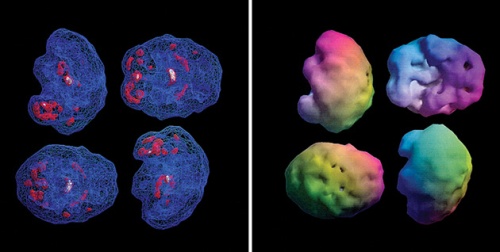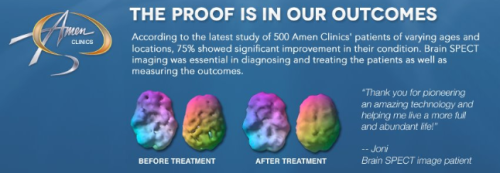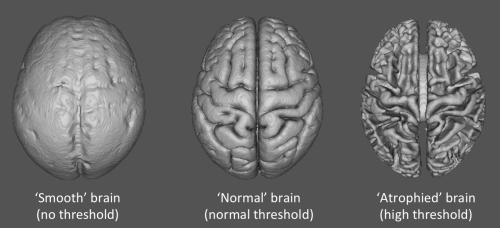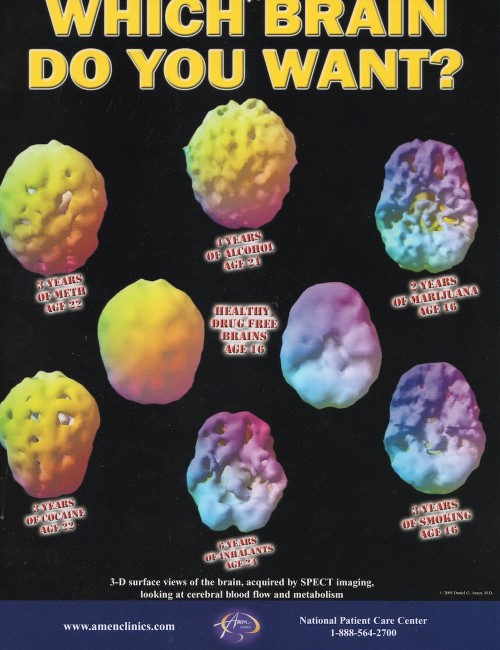I’ve written before about Daniel Amen and his network of Amen Clinics, that (amongst other things) give utterly unnecessary doses of radiation to children. To briefly recap, Amen is a psychiatrist, author, motivational speaker etc. who has built his reputation and fortune on performing brain scans and then wildly exaggerating their diagnostic and prognostic usefulness. His clinics use an imaging modality called SPECT, a largely obsolete technology with terrible spatial resolution that’s been superseded by PET and MRI for most clinical and research purposes. The only real advantage of SPECT is that it’s much, much cheaper to perform than either PET or MRI, which is, of course, precisely why he uses it. He’s been at this a while too. This article in Wired from 2008 contains some choice quotes:
“Let’s look at your scans.” He takes the images that he printed out this morning and puts them side by side on a large table. He points to several views of the surface of my brain. “What I see here is that activity in your prefrontal cortex is low at rest but becomes better when you concentrate, and your thalamus becomes more active, too. I think this means you have a predisposition to depression.”
I nod. Scrutinizing the scans some more, he says, “You need to be busy to be happy. Your brain is cool at rest. You need stuff in your life to feel alive, together, and connected.” He looks at another view, this one showing only the most active regions of my brain. “In this scan, you have increased activity in your thalamus, your two basal ganglia, and your cingulate cortex.” He picks up a pen and draws a line connecting these four regions to the right lateral temporal lobe. “I call this the diamond plus.’ It’s a pattern of angst, and we see it in people who have had significant trauma in their lives.”
And these are the scans that he’s supposedly looking at while making these judgements:
What?! You can’t diagnose conditions like depression in an individual subject from even the very best brain scans, and you certainly can’t see the effects of such nebulous existential concepts like ‘angst’. What the hell is ‘angst’ supposed to mean in this context anyway?! He might as well be saying “The connections between your Shatner’s Bassoon and the peri-sinovial labio-ventral cortex is unusually cromulent and this might predispose you to brilligness, and excessive slithy toveing.” So, yeah, he’s a colossal bullshitter, who must have to keep a fire extinguisher handy at all times to dampen down the constant spontaneous combustion happening in his pants. This is nowhere more true than in the adverts for his clinics. Here’s one from the clinics LinkedIn page:
Brains get significantly less lumpy-looking after treatment – good to know. But hang on – brains are lumpy-looking. They’re covered in ridges and bumps! These smooth-looking pretty-coloured brains that Amen seems to think are great actually resemble lissencephaly; a very serious condition where the developing brain lacks the normal cortical folds. In this case, I’m pretty sure that the smoothness of the images is produced by the fact that the SPECT imaging methods he uses are so poor that they simply can’t show that much detail of the cortical surface. Also, I’ve no idea what the pretty colour-washes are meant to signify, if anything. To show you how easy it is to create images like this, here are some I threw together in about five minutes using FSLView and a standard-space MRI template (the MNI152 1mm template, bundled with FSL), by varying the threshold of the 3D rendered surface:
I’ve written before about why presenting brain images out of context in this way can be extremely misleading. Here’s another choice Amen-sponsored example:
As if it really needed saying; utterly meaningless nonsense. A Google image search brings up loads more examples, but I won’t sully your eyeballs with them unnecessarily. Amen’s use of SPECT images in this way is a gargantuan 20-year effort in energetic turd-polishing of a staggeringly disingenuous and despicable type, and I’m frankly amazed that he still seems to have an active licence to practice medicine.
Many thanks to @CousinAmygdala (and others) who first showed me these kinds of ads, and who also coined the most excellent term ‘neurofearmongering’.






You must be logged in to post a comment.